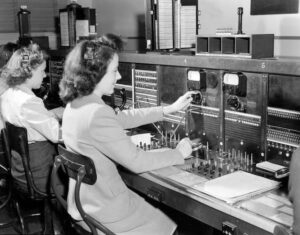161sharesThere are few things I enjoy more than being a tourist in my own hometown and when I’m offered the chance to experience the city like a visitor it’s rare that I’ll pass it up. Last week, I was invited to participate in the Taste Vancouver Food Tour’s Gastown Tour. Meeting up with ten others, […]
Continue reading this post
3sharesThis afternoon a bear was tranquilized in downtown Vancouver after hitching a ride into town on a garbage truck. Reports and photos have been pouring in across all social and traditional media outlets including a set of images from the Vancouver Public Library. Photo: CBCStephenQuinn on Twitter CBC News says that the truck was stopped […]
Continue reading this post
Vancouver History Telephones – Photos from the Archives
Continue reading this post
231sharesThe Westin Grand on Robson has been keeping a secret, Hidden Tasting Bar & Social Lounge. After coming in off the sidewalk near Robson and Homer, head up the large winding staircase toward the hotel’s lobby and there you’ll find Hidden. Windows stretching to the height of the massive ceilings surround the purple-coloured dining area […]
Continue reading this post
0sharesThey’re all jolly, sporting white beards, dressed in red and white, and have one incredible sweet tooth. You better watch out Vancouver, Santacon is coming to town. Photo credit: (Left) dennis (Right) Lin Hsin Yao on Flickr Santacon/Santarchy began in San Francisco 17 years ago when several dozen “Santas” went out on the town. Since […]
Continue reading this post
 Vancouver Canadians Promotional Schedule 2025
Vancouver Canadians Promotional Schedule 2025 Lapu Lapu Day Tragedy in Vancouver - Resources
Lapu Lapu Day Tragedy in Vancouver - Resources May Events in Metro Vancouver 2025
May Events in Metro Vancouver 2025
